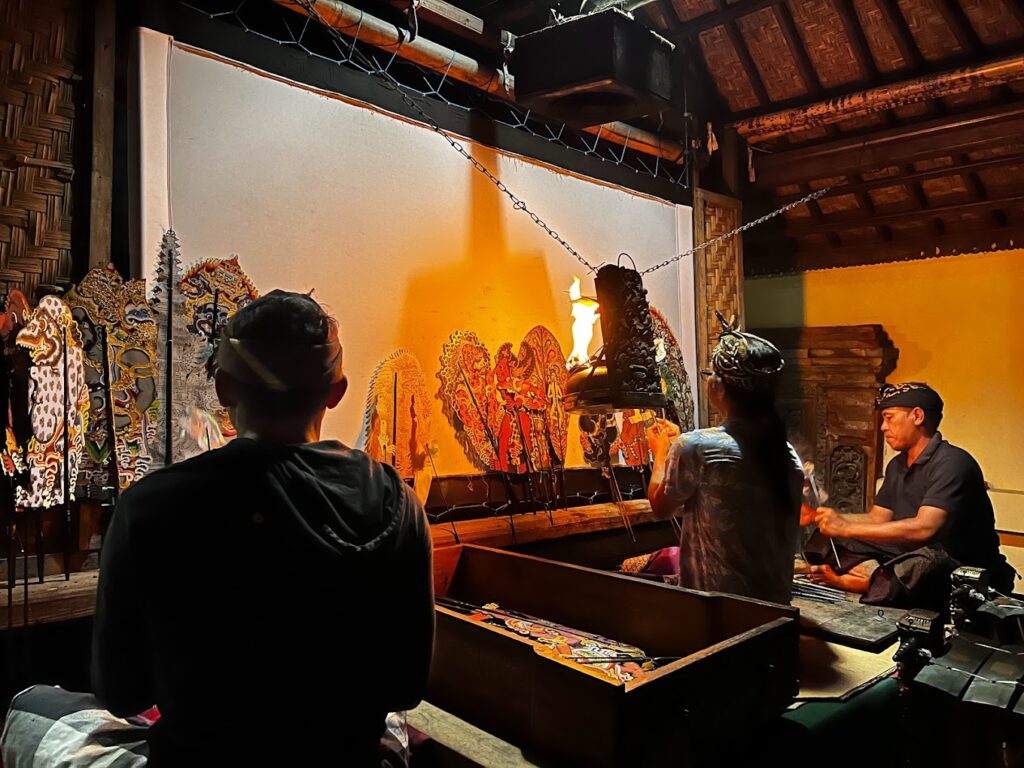The tradition of shadow puppets ( Wayang Kulit ) has woven its timeless allure into the hearts of generations. This ancient art form, with its intricate craftsmanship and mesmerizing storytelling, serves as a testament to the island’s deep-rooted artistic heritage. Drawing inspiration from ancient mythology, folklore, and religious epics, Balinese shadow puppetry has transcended temporal confines, preserving its enchanting legacy while embracing modern platforms for cultural expression.
Historical Significance and Evolution:
Originating from the cultural amalgamation of Hindu-Buddhist beliefs and indigenous Javanese customs, the art of shadow puppetry in Bali can be traced back to ancient ritualistic performances and ceremonial rites. Initially serving as a medium for recounting mythical tales and disseminating moral teachings, Wayang Kulit gradually evolved into a sophisticated art form, captivating audiences with its intricate leather puppets, intricate gamelan music, and masterful storytelling.
Over the centuries, Balinese shadow puppetry has undergone various transformations, incorporating diverse narrative elements and embracing contemporary themes while remaining deeply rooted in its cultural origins. The evolution of shadow puppetry reflects Bali’s historical resilience, artistic adaptability, and commitment to preserving its cultural heritage in the face of modernization and globalization.

Intricate Craftsmanship and Symbolic Narrative:
The art of creating Balinese shadow puppets entails a meticulous process that involves skilled artisans intricately carving and painting buffalo hide to fashion the puppets. Each puppet embodies a symbolic representation of mythological characters, deities, and legendary figures, meticulously crafted to evoke a sense of spiritual resonance and cultural symbolism. The elaborate puppets, delicately articulated and embellished with ornate details, come to life under the interplay of light and shadow, conveying an ethereal narrative that transcends linguistic barriers and cultural boundaries.
Balinese shadow puppetry encompasses an array of narratives drawn from the ancient Hindu epics of the Ramayana and Mahabharata, as well as local folklore and historical legends. The performances, accompanied by the evocative melodies of the traditional gamelan orchestra, unfold as intricate sagas of heroism, romance, and spiritual enlightenment, resonating with audiences through their profound moral teachings and allegorical significance.
The puppeteer, known as a dalang, skillfully manipulates the intricately designed leather puppets behind a backlit white screen, casting their shadows onto it. These shadows are then projected onto the screen, creating a visually captivating play of light and darkness, bringing the characters and their narratives to life. The dalang also voices all the characters, narrates the story, and provides commentary, often displaying immense skill in vocal modulation and storytelling techniques.
Cultural Resilience and Contemporary Relevance:
Despite the advent of modern entertainment and digital media, the tradition of Balinese shadow puppetry remains deeply ingrained in the island’s cultural fabric, serving as a cherished emblem of artistic excellence and spiritual devotion. Dedicated puppeteers, cultural enthusiasts, and local communities in Bali continue to uphold the legacy of Wayang Kulit by organizing regular performances and cultural festivals to promote cross-generational appreciation for this ancient art form.
The art of shadow puppets in Bali stands as a testament to the island’s enduring cultural legacy and artistic finesse. Its intricate craftsmanship, evocative narratives, and profound moral teachings continue to captivate audiences, transcending geographical boundaries and fostering a deeper appreciation for Bali’s rich cultural tapestry. As a vibrant embodiment of artistic ingenuity and spiritual enlightenment, Balinese shadow puppetry embodies the island’s unwavering commitment to preserving its cultural heritage and sharing its timeless enchantment with the world.
